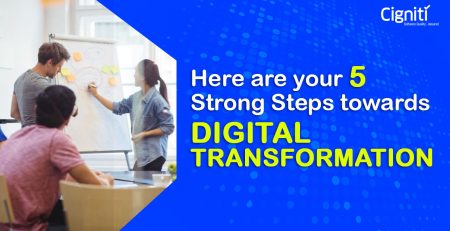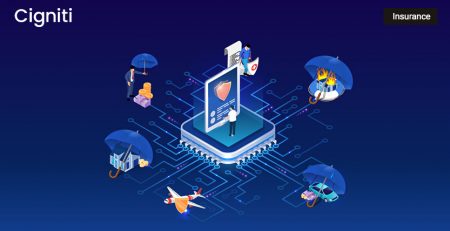How data helps create a successful Digital Transformation roadmap
|
Listen on the go!
|
Digital transformation is the talk of the global town, now more than ever before.
Despite the accelerated initiatives and hasty adoption of digital solutions due to the situational challenges presented by the pandemic, data remains the constant factor that has to be taken into consideration.
Without data, without quality data, no amount of investments can assure the success of the digital transformation initiatives.
You need to have data that is sufficient, reliable, and available when required.
Brian Benn, the Chief Information Officer and Senior Vice President at Atlanta Housing Authority, spoke on our podcast about the integral role of data in charting a successful roadmap for digital transformation in an organization. This blog is an excerpt from their discussion on the QATalks podcast.
Digital transformation is based on data
Digital transformation is all about technology, data, process, and organizational change.
Speaking about the changes that have been introduced over at the Atlanta Housing Authority for accelerating digital transformation initiatives, Brian emphasized on the value of data –
“Digital transformation is such broad a term and it differs from shop to shop. But I think one thing that resonates, no matter where you’re doing it, no matter what it means for your organization is it’s going to be based on data. You can’t digitally transform until you have data. So one of the things we’ve introduced here is an Enterprise Information Management strategy and plan, which means that we want to first corral all the data.”
“We want to reduce the disparate systems. We want to come down to one central source of truth and ensure the accuracy and accessibility of our data so that we can drive decisions down, so we can provide dashboards, and from the highest level to the lowest level in our team, we just want to foster those data-driven decisions. So before we can even talk about digital transformation, which to me is just a symbiotic relationship between people, processes, and technology, one of the big things that we introduced was that EIM strategy and implementation plan.”
The shift from ETL testing to ELT testing
ETL is a process of extracting data from the source, transforming it into the required format, and then loading it into a single depository. ETL testing validates, verifies, and qualifies data during these three steps of Extract, Transform, and Load, while preventing data duplication and loss.
As we talk about the need for quality data for successful digital transformation, ETL testing has to come into the conversation. However, Brian mentions a change in the process of getting access to the data –
“I grew up hearing the ETL; extract, transform, and load. Now, if you notice, we’re talking about we will change that dynamic to ELT. So now you extract it, now you load it, and then you transform the data. So that’s one of the small ways where we’re changing and we’re trying to be a little more aggressive. And as long as there’s a system around it, it can be done.”
Balancing between transformation strategy and digital technology
Nothing could ever expedite the digital transformation journey the way this ongoing pandemic has. Strategies got overturned overnight and transformation initiatives were put into the gear almost immediately to maintain business continuity.
Although digital transformation is the necessity amidst this upheaval, it is also critical to achieve the right balance between the strategy and the technology for a focused approach.
Brian, while talking about the current trend among organizations for achieving this balance, said –
“Today, as the COVID situation arose, digital became the main transformation for every organization. So they want to know how they can provide the access to the system, both internal and external, in a digital way. That’s the key transformation going on. A lot of companies are buying digital tools today for smart work and for their own SalesForce implementation, for their cloud strategies, for migrating their existing legacy transformation into digital transformation world through various factors offered. They’re implementing a lot of technologies like IoT and cloud. They are doing a lot of process automation around it and they want to collect all the data.”
“Data is the king today. They want to see a good amount of data so that they can use the data for predictive analytics. How can they predict the future of their release? How can they predict the future of customer experience? So all these are now driven through this digital transformation. That’s what we are seeing in large organizations implementing it through various tools. And today, the biggest challenge, if you see is access to the skill set. All of a sudden the digital transformation wave happened. More skilled workforce is needed; more tools are needed to help with the transformation.”
Bridging the divide between digital strategies and impact on customer service
Any organization undertaking digital transformation should not be looking at it only for the sake of transforming. Instead, the initiatives should be focused on the impact that they would have on its customer service and customer experiences.
To bridge this divide between digital strategies and the impact on the customer service, Brian recommends –
“One of the things that this pandemic has definitely taught us is that customer service is king. It has not gone away. It’s even more apropos now. We need to be fully aware of our product and service. We should know what we’re offering, we should be able to speak about it, we should have SME or subject matter experts deal with our internal customers so that if they need help, they can respond.”
“The other thing is to have that positive can-do attitude. Just thinking in the same terms when you go into the store, go into the mall or the kiosk and you’re buying something or you go and get your car service, you want a positive can-do attitude that helps you come back, that brings referrals, and then there’s responsiveness. So if you’re entering something in service now, whatever the ticketing system may be, sometimes you may need to automate and just say, ‘Hey, we’ve received a response and make sure those facilities are being met and we’re going to respond based on whatever the request is.’ And then, of course, follow up. After all that’s done, after these steps are taken, you’ve shown the product and service awareness, you have that positive attitude, you’ve been responsive, you can point them to these services catalogs, you’ve got to follow up. I think all those little points and touches that are not dissimilar from what we do or what we expect from the people we take our cars to and we buy other products from. I think we should have that same mentality coupled with our technical expertise.”
Impact of emerging technologies on Quality Assurance and testing
Brian emphasizes that quality assurance and testing is an integral part of any IT lifecycle. He says –
“Even if you get the latest and the greatest technologies like AI or machine learning, predictive analytics, or cloud, or RPA, you need to have quality assurance and testing. For example, if I take a use case, I want to build an AI system with raw data but without data, you cannot build it. So you need to have a lot of data. Whether you follow ETL or ELT, you need to verify the data in both the cases. You need to make sure that the quality of data is met, the compliance is met, and the security is met. All of these you can do only through quality assurance and testing. Testing is now redefined as quality engineering and it gets fit right from the beginning of your lifecycle.”
To sum up
As per McKinsey insights, “Without quality-assuring governance, companies not only miss out on data-driven opportunities; they waste resources. Data processing and cleanup can consume more than half of an analytics team’s time, including that of highly paid data scientists, which limits scalability and frustrates employees. Indeed, the productivity of employees across the organization can suffer: respondents to our 2019 Global Data Transformation Survey reported that an average of 30 percent of their total enterprise time was spent on non-value-added tasks because of poor data quality and availability.”
Therefore, it is important to not only have data, but valuable data as well. And, that can be ensured with the help of big data & analytics testing.
Cigniti leverages its experience of having tested large scale data warehousing and business intelligence applications to offer a host of Big Data testing services and solutions such as BI application Usability Testing. Schedule a discussion with us to speak to our experts.





Leave a Reply